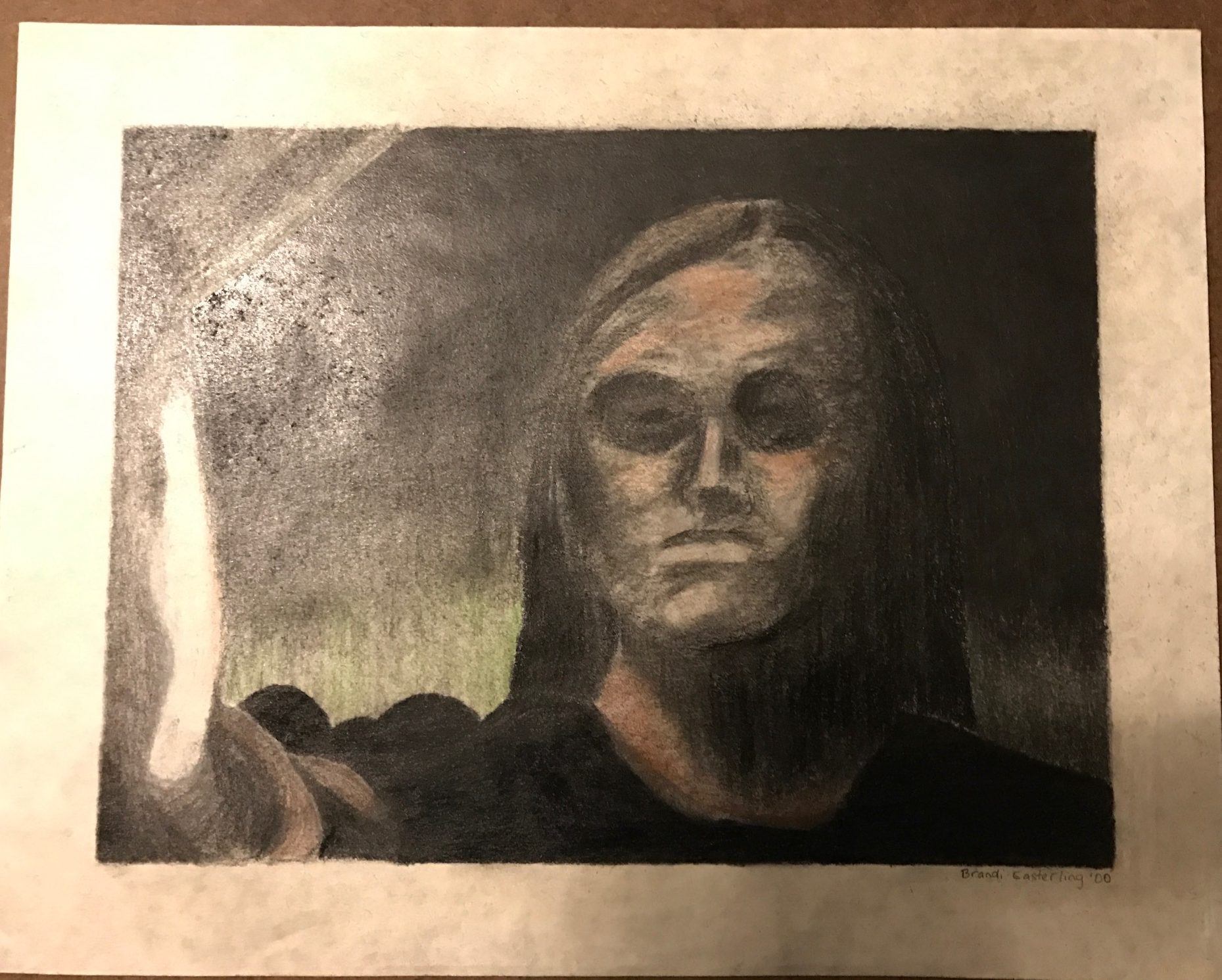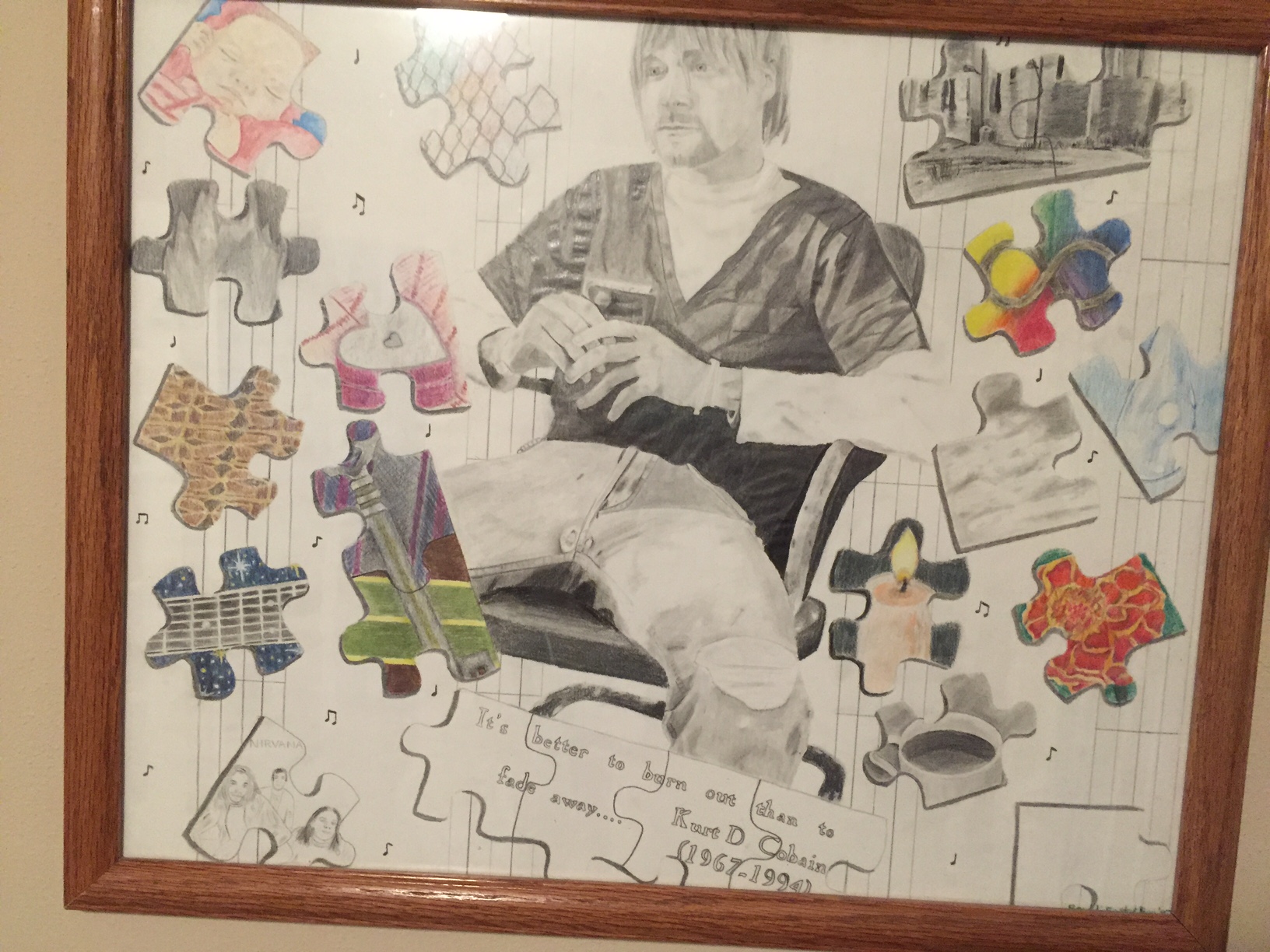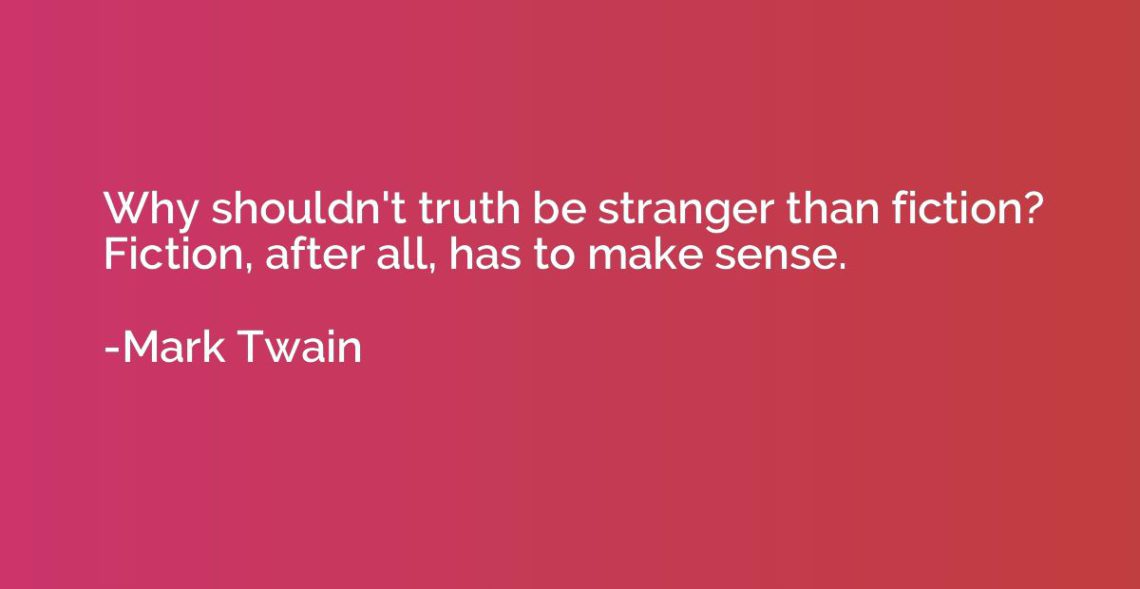
How much truth is in my fiction?
Writing what I knew as a teenager
I loved reading when I was a kid, and I began writing as a teenager. The results of my early efforts were 7 handwritten “finished” novels, several poems (many of which are terrible), numerous essays, one random index card with a great idea, a notebook of not-so-great ideas, and a handful of false starts for a story that will never work.

My finished stories were fabrications with a bit of what I wanted mixed in. For example, I gave all my main female characters a love interest because I wanted a boyfriend so badly as a teen. Along with the fiction was a bit of truth mixed in. It might have been character descriptions taken from people I knew (usually a combination of two or more people’s physical characteristics or personality traits) or phrases my friends and I used mixed in with the dialogue.
My history with diaries and journals
I started a diary when I was 10. I have all those journals that took me into adulthood, and I’ve reread certain parts from time to time to remember things. The most difficult ones are from ages 15-20 and are too painful to revisit often since they contain some things I’d like to forget. I’m thankful to have them tucked away. I also had a memory journal, a dream journal, and a poetry journal with limited content.
Along with the physical journals, I wrote on loose-leaf paper during school to get my thoughts out. I looked through some of those papers while preparing for this post. There were so many things I had forgotten about. I think we all have off-the-wall and downright crazy (and often stupid) thoughts when we’re teenagers, and fortunately (or unfortunately) I have records of mine. Some things I wrote are mortifying and should probably remain secret since they embarrass me even now. (And if by chance, the guy I had such a huge crush on when I was 14-15 should happen upon this post, I am so, so sorry! I was out of my ever-loving mind back then.)
And I should add, I am eternally grateful social media didn’t exist in the 1990s!
But, who knows—after I have a little more therapy under my belt, I might pull from the vault for inspiration for future novels.
About my novels and their foundations
When Does Life Begin?
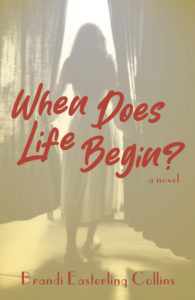 Publication date: September 23, 2023, Luminesce Publishing. The date is significant to me for reasons I don’t wish to share, but it’s also poetic that I jotted down the time as 9:23 p.m. when I started writing the original draft.
Publication date: September 23, 2023, Luminesce Publishing. The date is significant to me for reasons I don’t wish to share, but it’s also poetic that I jotted down the time as 9:23 p.m. when I started writing the original draft.
Dedication: My mom, Opal, and my uncle, Howard Easterling, Jr.
Original draft written: January 15—July 31, 1995, November 5, 1995—January 13, 1996 (Ages 13-14)
This was the first book I started but the second one I finished. When I got stuck on it about 7 months in, I took a break and worked on another story. The title comes from a line in a Soul Asylum song, “Tell Me When.”
The original draft of the book is a poorly-written soap opera drama set in the mid-1990s with way too many characters, like a cross between the TV shows Melrose Place and Beverly Hills, 90210. The premise was Lydia Dawson (originally spelled Dahson for unknown reasons) wanting to become an actress and having issues with her boyfriend Jason Caldwell. In the first version, she’s 22 years old and has a twin brother named Luke and a younger sister named Phoebe. Jason has a younger sister named Marienne. Lydia meets a guy named Blake in an acting workshop and has conflicting feelings.
I also described a handful of other characters in great detail with birthdays and everything in my character sheets. I always did general story treatment that I would revise as needed. See the example below that I actually typed on an electric typewriter my grandma had given me.

How much was true in the first draft?
Not a single thing. I made it all up. Lydia was based on Winona Ryder, one of my favorite actresses, using the first name of her character in Beetlejuice and some characteristics from how she looked in Mermaids. Jason was based on Christian Slater, taking the first name of his character in Heathers.
What did I keep when I started rewriting the story as an adult?
Lydia Dawson, pursuing her acting dream and falling in love with Jason Caldwell. I kept Lydia’s physical characteristics. I also kept the title and the Arkansas setting. I kept character names for the leads, Luke, Phoebe, Vicky (Vicki), and Marienne.
What changed?
Almost everything changed.
- I cut out all the fluff characters (but I still have them for future stories) and the multiple instances of one character slapping another (like I said before, too much 90210 and Melrose Place).
- Lydia is no longer a twin and has no biological siblings; Luke is her older stepbrother.
- Lydia’s father died when she was a kid.
- Phoebe is one of Lydia’s best friends instead of her sister. Vicki is someone Lydia befriends in college rather than a HS friend. Marienne becomes one of Lydia’s best friends in college and is Jason’s cousin instead of his sister.
- Blake became Kolton (read more about why in the section for Jordan’s Sister).
- The ending is vastly different.
- I also told the story in 2019-2024 rather than the original 1990s timeline.
How much truth did I put in the published novel?
Significantly more than in my previous novels. Here are some highlights:
- Lydia lost her father at a young age and her mother remarried a wonderful man, just like me.
- Their relationship isn’t identical to my real-life situation, but Lydia’s feelings for Jason are based on my feelings for the guy I fell in love with at 18.
- Lydia’s reactions to the early COVID-19 pandemic quarantine in March 2020 mirror my reactions to September 11, 2001.
- Kolton is not based on my husband, but Lydia’s feelings about dating someone new after heartbreak are based on my feelings when I started dating my husband.
- There’s a scene where Lydia does face painting at a carnival that is similar to something I did in college.
- Lydia attends a party in the middle of nowhere and ends up being the only sober person there. I heavily fictionalized my experiences at two different parties as the only sober person.
- Lydia’s battle with depression is something I understand firsthand.
- Phoebe, Vicki, and Marienne each share characteristics of two or more of my real-life friends, and Lydia’s grandmother is based on my maternal grandmother Willie Russell, although I gave her my paternal grandmother’s first name.
Jordan’s Sister
 Publication date: April 21, 2018. I wish I could say the date has significance, but it’s just when the novel was ready, and the first one published by Luminesce Publishing, my own imprint.
Publication date: April 21, 2018. I wish I could say the date has significance, but it’s just when the novel was ready, and the first one published by Luminesce Publishing, my own imprint.
Dedication: to all the people who have been “Laynes” in my life at different points in time—those who have loved me at my best, loved me even more at my worst, supported me when I was broken, and encouraged me to always let my light shine.
Original drafts written: Jordan’s Sister, January 17—March 29, 1996 and Just Taylor, April 1—May 19, 1996 (Age 14)
How much was true in the first draft?
Very little. I used some real teenage angst and sibling rivalry.
What did I keep when I started rewriting the story as an adult?
The names of the two main characters, Taylor and Jordan Hoffman, and the secondary characters, Michael Bulloch and Dr. Clearaby. I kept the older sister-younger sister jealousy dynamic as well. I kept the title of book one for the combined story.
What changed?
- Everything changed significantly from the setting and timeline to the plot and ages of the main characters.
- The original story was set in Ohio in 1996 and was told in two parts before and after a teenage suicide. The new, combined story takes place outside Los Angeles in 2016-2018. Taylor is a former child star and aspiring singer. Jordan is a famous actress who was also a child star.
- Jordan was 15 and Taylor was 14. They had an older brother named Steve, a younger sister named Macie, and involved parents. In the final story, the sisters are 24-25 and 22-23 with no other siblings and absent parents.
- Jordan had an extensive and popular friend group in the draft. In the final story, Jordan has an on-off boyfriend named Chase and a frenemy named Blake (I took the character name from the When Does Life Begin? draft), but she doesn’t have any real friends.
- Taylor had her best friend, Joseph, and her boyfriend Michael. While Michael made an appearance in the final story, there wasn’t room for Joseph, so his character’s likeness moved to What I Learned That Summer.
- New characters include Layne (and his family), Willow, Kayla, and Mr. Cosney.
Unrelated fun fact about Joseph: His birthday in my original character pages is listed as November 27, which is my husband’s birthday.
How much truth is in the published novel?
Just a little. I loosely based Jordan and Willow on people I know. Taylor and Layne’s love of music is my own, and I love the songs mentioned in Jordan’s Sister (plus, I wrote their original songs). Layne’s thoughts on God are mine. Taylor’s anger toward her father is based on my anger about a different situation. Learn more about my inspiration for Taylor, Layne, and Jordan.
Fun fact: I painted the watercolor used on the book cover when I was in college.
One Shot
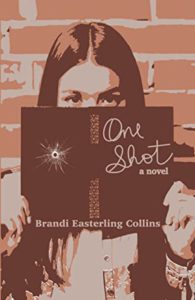 Publication date: January 23, 2021, Luminesce Publishing. The date is significant because it was my dad’s birthday. It’s also my dear friend and beta reader Melissa’s birthday.
Publication date: January 23, 2021, Luminesce Publishing. The date is significant because it was my dad’s birthday. It’s also my dear friend and beta reader Melissa’s birthday.
Dedication: To my dads, Douglas Easterling and Ronnie Campbell
Original draft written: August 2, 1996—December 17, 1996 (Age 15)
How much was true in the first draft?
Nothing.
What did I keep when I started rewriting the story as an adult?
The names and relationships of the main characters, sisters Charlotte, Julia, and Olivia Manchester, and their parents Simon and Gina. Names and relationships of Vincent Rowlands (Charlotte’s boyfriend) Eric (Liv’s boyfriend), Rachel (Charlotte’s best friend), and Nadia (the campaign manager’s cousin). I also kept the general plot and title.
What changed?
I changed the date and setting from 1996 in Pennsylvania to December 2015 in an unspecified location in the US. I made the younger characters a bit older and changed the names of some secondary characters. I also changed Simon’s senator race to a campaign in the presidential primaries.
How much truth is in the published novel?
Three small details. I gave Charlotte and Vincent ulcerative colitis like me, so their battles and feelings about the disease are my truth. I gave Julia migraines, which I’ve struggled with. Charlotte’s political views mirror mine.
Fun fact: The title on the book cover is in my handwriting.
Caroline’s Lighthouse
 Publication date: First edition, November 18, 2016, Archway Publishing (out of print). Second edition, December 20, 2018, Luminesce Publishing.
Publication date: First edition, November 18, 2016, Archway Publishing (out of print). Second edition, December 20, 2018, Luminesce Publishing.
Dedication: N/A but I acknowledged early readers and my supportive family.
Original draft written: January 3—May 27, 1997 (Age 15)
(Rewrites January—May 1999 and January—May 2003)
What did I keep when I started rewriting the story as an adult?
This book is truly my baby because it was the last I finished as a teen and the first I published as an adult. I kept the title and left the main story setting in the mid-1990s because that’s when it needed to be for everything to make sense with the timeline. Most of the story is the same, including the legend of Caroline Marshall in the 1840s.
How much truth is in the published novel?
There’s a scene when Margo describes a supernatural encounter that is based on my experience of something similar. Caroline’s grief and sentimentality are mine. Jack’s feelings about missing his late father are mine. Brad’s fear of heights is mine. Margo’s advice to Caroline is what I would tell my children.
Side note: I did extensive research as a teen and adult to make sure descriptions of the lighthouse and other historical items were accurate. It’s a pet peeve of mine when movies or books aren’t historically accurate.
Fun fact: The drawing on the front cover of the first edition (and the back of the second edition) is a mixed-media art project I completed when I was in high school.
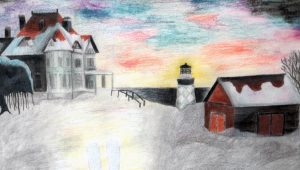
What I Learned That Summer
 Publication date, August 2, 2019, Luminesce Publishing. The date is significant because was my late Aunt Diana’s birthday.
Publication date, August 2, 2019, Luminesce Publishing. The date is significant because was my late Aunt Diana’s birthday.
Dedication: Diana Lynn Russell Fleming. (see truth section below)
There is no original draft. All I had was a single undated and untitled index card from approximately 1996-1998. “Kincaid spends the summer with her grandparents at their small motel and learns lessons as she meets interesting people.” (Unfortunately, I have misplaced that card. I looked for it in prep for this post. I’ll add a photo later if I ever come across it again.)
Fun fact: The sunset image on the book cover is my acrylic painting.
The writing process and what changed from my original idea
When I first jotted down my idea, I wanted to time-travel back to the 1970s for Kincaid’s summer, but when I picked up the story as an adult, the time-travel was to 1995 for her story. I thought about having Kincaid meet a single mother at the motel, but I decided instead to make that single mother her Aunt Sylvia. I pulled Joseph’s character from the original drafts of Jordan’s Sister and Just Taylor since he was such a great character who deserved to be part of something.
How much truth is in the published novel?
- Kincaid and Joseph’s grief is pulled from my life.
- I gained experience painting a fence as a teen like Kincaid. (Fence painting seems to be a character-building experience that even Mark Twain got behind in Tom Sawyer.)
- Kincaid’s desire to be a writer is how I felt at her age, and her poem “The Night,” I wrote in 1996 when I was 15.
- Joseph’s drawing hobby is also one of my hobbies.
- Derek is based on a guy I had a crush on when I was a teen, though I toned down Kincaid’s feelings for him significantly.
- Sylvia’s feelings about her past relationship with Mitch are my feelings about a past relationship.
- Kincaid’s grandmother is based on my paternal grandmother, Pearl Easterling. Her grandfather is a combination of my grandfathers Howard Easterling and Erple Russell.
- I had pink hair briefly when I was in my early 20s like Kincaid at the beginning of the story.
- Aunt Sylvia was inspired by my Aunt Diana, who passed away while I was writing the novel. I had already planned to dedicate the novel to her because of this note I saved, which reads: To my Aunt Diana Fleming for buying me a 25¢ bag of Cheetos at the Downtown (Benton) Harvest Foods on April 13, 1996 (Saturday) at 9:05 p.m. And I promised her that when I became a writer, I would dedicate one of my books to her for that reason.

Other books I plan to rewrite (as of 2023)
I still have two manuscripts I wrote at 14 that need a ton of work before publishing:
- Night and Day (July 31—November 2, 1995) is about Hope and her twin sister, Faith, and the two couldn’t be more different. Soon, as the only brunette in a family of blonds, Hope begins to suspect her parents secretly adopted her. She enlists the help of her new boyfriend Devon to investigate. (Because why would a teenager just ask their parents?)
- Four Hearts (November 20, 1995—January 14, 1996) is about 14-year-old Noelle and her childhood friend Austin. After Austin gets in trouble at school and later has a crisis at home, he runs away. Good girl, Noelle, the only one who knows his whereabouts, goes after him. (Because why would a teenager tell their parents?)
I’m still playing around with some ideas for changes to my last two stories to get them ready to share with readers. After those two are complete, I’ll explore some new ideas. I feel like I owe it to myself to see these stories through first.
The book I’ll never finish (with good reason)
On another note, I have several false starts of a book with the working title “Anavrin” (and yes, folks, that’s Nirvana spelled backward because I’m a nerd). I’d almost forgotten about it. Some of the characters were Willow, Amanda, and Michael ( names I used in the published copy of Jordan’s Sister) and Matt and Emma. The premise of the story was supposed to be about my early childhood and teenage life. I was “Amanda” and the storyteller was “Willow” since at the time, I didn’t feel interesting enough to be the main character in my own story. It’s telling and kind of sad.
I’ll never finish that book because trying to write every aspect of my life and play it off as fiction was a terrible idea. Maybe I’ll write a memoir one day, and maybe not. For now, it’s best to let that one rest as the pages continue to yellow with age.
Writing what I know now
I started this blog in 2016 at the beginning of my decision to revitalize my writing and get Caroline’s Lighthouse ready for publication. Back then, I wasn’t sure what the website would become. Before I dusted off the old manuscript, I hadn’t written much since college (I graduated with my master’s degree in 2005) and rarely wrote in my journal. I was distracted by other things and focused on raising my young children. Writing again became a form of therapy (and helped supplement my actual therapy) and made me feel happy and fulfilled.
I’ve shared short stories, essays, and poetry from high school and college. I’ve shared new poetry and posts tackling tough topics like depression, body image, suicide, and job loss. I wrote about my love history, the death of my stepdad, and what I remember about my late father and received a lot of love for those posts. Recently, I added a pop culture category to write about books, movies, music, and television. I plan to keep sharing what I know, how I feel, and what I love.
Thankful for you, my readers
Just a couple of days ago, I received a message from a new subscriber who stumbled upon my blog, and her comments made my whole day. Thank you, and welcome L.A.!
Readers, is there something I’ve written that’s touched your heart? Please let me know in the comments or send me a message. I love reading kind words that remind me why I share my writing. I share it so that when others relate to my writing, they know they’re not alone. (I think of artists as a united group sharing what it means to be human: visual artists, poets, songwriters, and authors.)
Learn where to purchase my novels in my bookstore, and please leave a review on Goodreads and Amazon when you’re finished reading.
Thank you,
-Brandi Easterling Collins
Cover image from Quotation.io.


